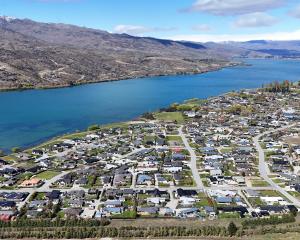However, it will not review its earthquake-prone building policy until the final outcome of the royal commission of inquiry into the Christchurch earthquakes is complete, as it may affect legislation around building codes.
Council planning and environment manager Louise van der Voort told yesterday's council meeting the aim was to remove some of the low-priority buildings identified during the council's desktop review of public buildings last year.
Some councillors questioned why money and effort should be spent on identifying the low priority buildings when it could be spent on doing something about the high-risk buildings.
Central Otago Mayor Tony Lepper and Cr Martin McPherson both said low-priority buildings could get removed from the list only to be put back on when the Government introduces new legislation.
Under current policy, buildings are required to be strengthened to 33% of the building code, but that was likely to rise to 67% once the inquiry was completed, Ms van der Voort said.
Under the council's "passive" earthquake-prone building policy, alterations to the existing structure or a change of use are the only "trigger points" for upgrading the building.
It was acknowledged the desktop review might have resulted in some buildings being classified as earthquake prone when they were not and which would therefore incur some costs for the owners.
A matrix had been developed to apply to buildings to determine their priority (low, medium or high) for an engineering earthquake evaluation, she said.
It took into account building materials, the structure's frequency of use and the number of storeys.
Ms van der Voort recommended council staff apply the matrix and the resulting list of low-priority buildings be referred to an engineer for an earthquake evaluation. The $15,000 cost for that work had been included in the long-term plan.
She emphasised the evaluations would not be an engineering assessment but rather a reconsideration, based on the matrix information, of whether the building should continue to be classified as potentially earthquake prone.
The council's initial desktop review was done based on council records, without any inspection of the buildings.
Owners of those buildings identified as potentially earthquake prone were notified in August and encouraged to have an engineer carry out a detailed building assessment.
They were also told the building's potentially earthquake-prone status would be included on the property's land information memorandum (LIM).












